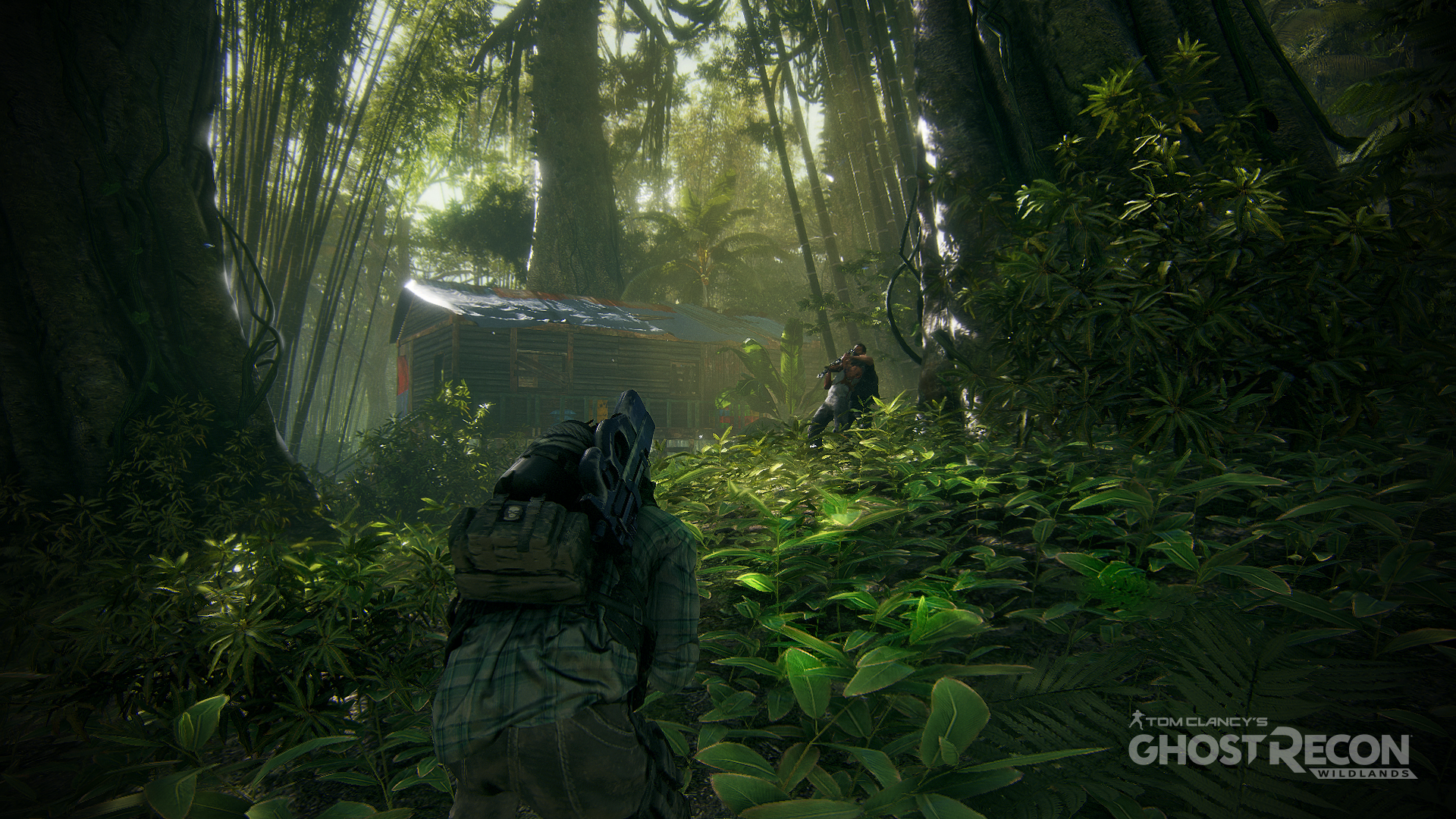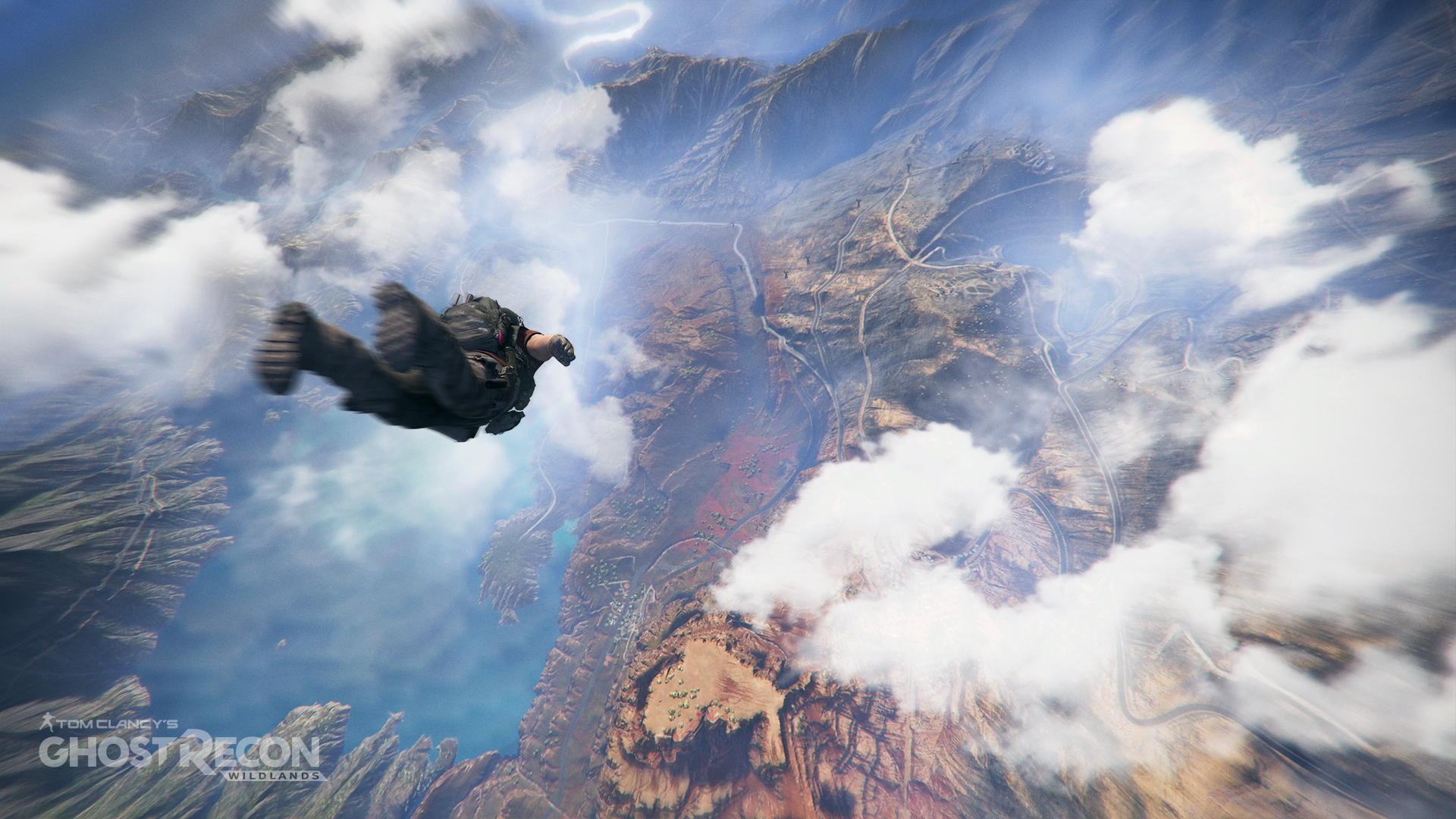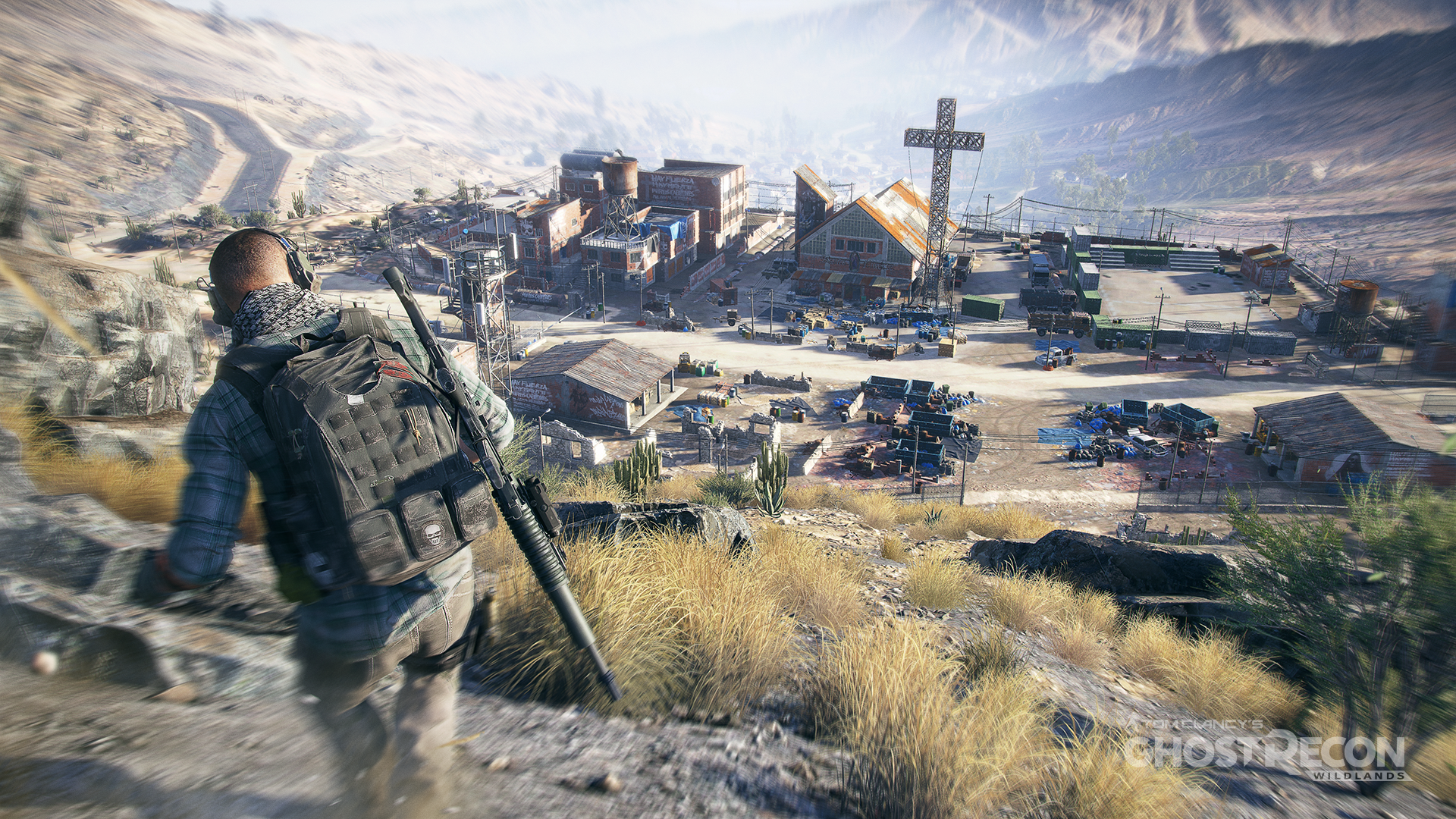Ghost Recon Wildlands: military action in a systemic open world

Every year Ubisoft reveals something big. Last year it was Rainbow Six Siege, the year before it was The Division, and this year it’s Ghost Recon Wildlands, an open world military shooter that looks like a cross between old Ghost Recon, ARMA 3, MGSV and Just Cause’s chaos and scale. I saw it in action last night, and it’s impressive to see four players occupy this giant world simultaneously and come together to tactically figure out these multi-part sandbox-style missions.
Ghost Recon Wildlands is set in a Bolivian landmass where a cartel has a stranglehold on the government, turning this part of the world into a drug state. This live demo had four players in different parts of the open world: one was driving on white salt flats, another was in a canyon of red-coloured rocks, another is pissing about in the mountains, and the fourth player is in a bright green jungle. The point Ubisoft is illustrating is that players are free to do whatever they want in this shared open world while co-existing within it, and that it’s got a fair amount of visual identity for what is Ubisoft’s biggest environment ever created (suck it, Far Cry 4).
The mission today is to kidnap an informant called Alvarez, who works for a crime boss called Nina Flores. The team starts by saving some hostages, taking one of the takers out and interrogating another to get Alvarez’s location. The action shifts across the map to an enemy-occupied village, where a massacre has been staged by the cartel in its outskirts to show they mean business. The squad is looking to steal a helicopter; every vehicle in the game is up for grabs, from buggies to aircraft to boats. Drones have been a part of Ghost Recon long before they were delivering Amazon packages and taking fingers off with their tiny rotors, and in Wildlands players can again use drones to hover overhead and pick enemy targets. We’re shown how there’s a concert going on in the village as well as a market, giving it some civilian life rather than it just being an empty combat arena.

The team sneaks through a long field of corn towards a helipad, and starts an inter-faction gunfight, where enemies will take each other out. Ubisoft points out that there’s also the option to sneak in at night, and that weather conditions have an effect, too. I ask Ubi about how that makes a difference. “Well, what we have is a living, breathing world with its own ecosystems,” says lead game designer Dominic Butler. “With bad weather conditions—we've got rain, low visibility at night, our detection for AI will be reduced. It's going to give the Ghosts lots of opportunities. We'll have some elite soldiers who are countermeasures to this, the ghosts also have a set of countermeasures. It's really up to the player how they want to approach, what tools they want to utilise. Sometimes it's going to be environment, sometimes it's going to be the tools we give them.”
The ghosts jump in the helicopter and travel across the world towards Alvarez’s location. It’s here I really get a sense of the scale of Ghost Recon Wildlands hinted at by the trailers: there’s a mountain in the distance, green fields in between big dry stretches of land and settlements dotted around. This looks as big as a Just Cause game.
Speaking of that, one of the guys base jumps out of the helicopter and towards the ground. It’s here how I can see how the freedom of approach has so much potential in Wildlands—this isn’t the choice between two weapons, it’s entirely about picking your angle, location and strategy. One player is set up as a sniper; in the demo, we’re shown how you can mark targets in the hills.
I notice XP racking up in the top right hand corner of the screen, so expect progression to play a big part in Wildlands. Ubi won’t be drawn into talking about it right now. “At this stage, all we can say that choosing your tools and levelling up is clearly part of what [our] special forces will do,” says senior producer Nouredine Abboud. He also cites the gunsmith mechanic from Ghost Recon Future Soldier as an example of how they’ve explored such systems in the past.
Keep up to date with the most important stories and the best deals, as picked by the PC Gamer team.

When the raid kicks off, one of the ghosts takes Alvarez hostage, throws him into a trunk and drives off. It’s a pretty straightforward mission and a really tiny slice of a game in pre-alpha, but I can already see the potential in so many different systems linking up. There’s even a whiff of The Phantom Pain to it, in sandboxes where the time of day or approach dictates how things play out.
I’m really encouraged by how Dominic Butler explains the approach to mission structure—it’s exactly what I want Wildlands to be, maybe more of an open world game than a military shooter. “It's more than it's an open approach—what we try to do is give the player a goal, a singular objective, that's clear to them but open to interpretation as to how they want to achieve it. So rather than say 'do A, B, C, D', we just say 'do A'. It's up to you how you do it and give them a wealth of options on how they do it.”


